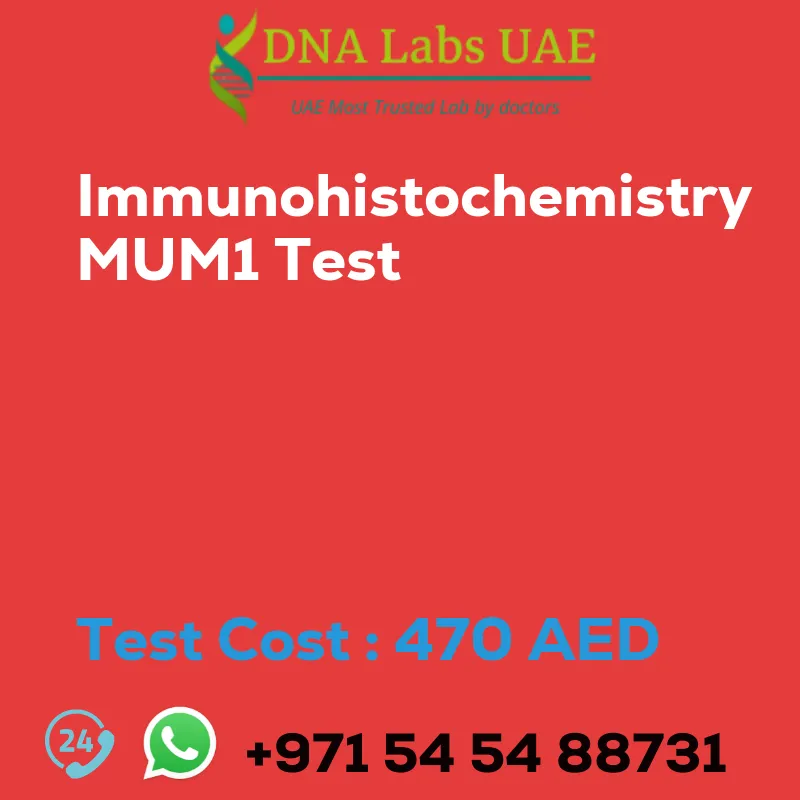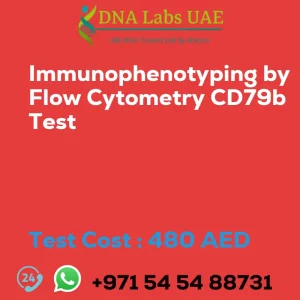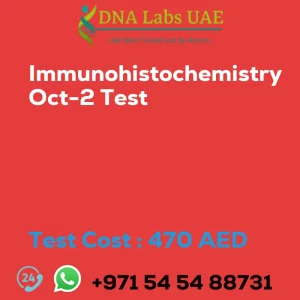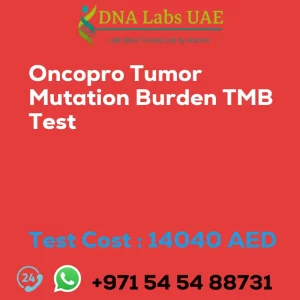IMMUNOHISTOCHEMISTRY MUM1 Test
Cost: AED 470.0
Test Name: IMMUNOHISTOCHEMISTRY MUM1 Test
Components: Immunohistochemistry
Test Type: Cancer
Doctor: Oncologist, Pathologist
Test Department: HISTOLOGY
Pre Test Information: Provide a copy of the Histopathology report, Site of biopsy and Clinical history.
Test Details
The MUM1 test is an immunohistochemistry test used in pathology to detect the presence of MUM1 protein in tissue samples. MUM1, also known as IRF4 (interferon regulatory factor 4), is a transcription factor that plays a role in the differentiation and function of B cells and plasma cells.
The MUM1 test is commonly used in the diagnosis and classification of lymphomas, particularly diffuse large B-cell lymphoma (DLBCL). DLBCL is the most common type of non-Hodgkin lymphoma and can be further categorized into subtypes based on the expression of various markers, including MUM1.
To perform the MUM1 test, a tissue sample (usually obtained through a biopsy) is processed and embedded in paraffin wax. Thin sections of the tissue are then mounted onto glass slides and subjected to immunohistochemical staining. The MUM1 antibody is applied to the tissue sections, and if MUM1 protein is present, it will bind to the antibody. This binding is then visualized using a detection system, such as a colored dye or fluorescence.
The results of the MUM1 test are interpreted by a pathologist who examines the stained tissue sections under a microscope. The presence or absence of MUM1 protein expression, as well as the pattern and intensity of staining, can provide valuable information about the type and subtype of lymphoma present.
It is important to note that the MUM1 test is just one component of a comprehensive diagnostic workup for lymphoma, and it is typically used in conjunction with other tests and markers to make an accurate diagnosis. Additionally, the interpretation of MUM1 staining can vary between pathologists, and further molecular testing may be required to confirm the diagnosis and guide treatment decisions.
Sample Condition: Submit tumor tissue in 10% Formal-saline OR Formalin fixed paraffin embedded block. Ship at room temperature. Provide a copy of the Histopathology report, Site of biopsy and Clinical history.
Report Delivery: Sample Daily by 6 pm; Report Block: 5 days Tissue Biopsy: 5 days Tissue large complex: 7 days
| Test Name | IMMUNOHISTOCHEMISTRY MUM1 Test |
|---|---|
| Components | |
| Price | 470.0 AED |
| Sample Condition | Submit tumor tissue in 10% Formal-saline OR Formalin fixed paraffin embedded block. Ship at room temperature. Provide a copy of the Histopathology report, Site of biopsy and Clinical history. |
| Report Delivery | Sample Daily by 6 pm; Report Block: 5 days Tissue Biopsy: 5 days Tissue large complex : 7 days |
| Method | Immunohistochemistry |
| Test type | Cancer |
| Doctor | Oncologist, Pathologist |
| Test Department: | HISTOLOGY |
| Pre Test Information | Provide a copy of the Histopathology report, Site of biopsy and Clinical history. |
| Test Details |
The MUM1 test is an immunohistochemistry test used in pathology to detect the presence of MUM1 protein in tissue samples. MUM1, also known as IRF4 (interferon regulatory factor 4), is a transcription factor that plays a role in the differentiation and function of B cells and plasma cells. The MUM1 test is commonly used in the diagnosis and classification of lymphomas, particularly diffuse large B-cell lymphoma (DLBCL). DLBCL is the most common type of non-Hodgkin lymphoma and can be further categorized into subtypes based on the expression of various markers, including MUM1. To perform the MUM1 test, a tissue sample (usually obtained through a biopsy) is processed and embedded in paraffin wax. Thin sections of the tissue are then mounted onto glass slides and subjected to immunohistochemical staining. The MUM1 antibody is applied to the tissue sections, and if MUM1 protein is present, it will bind to the antibody. This binding is then visualized using a detection system, such as a colored dye or fluorescence. The results of the MUM1 test are interpreted by a pathologist who examines the stained tissue sections under a microscope. The presence or absence of MUM1 protein expression, as well as the pattern and intensity of staining, can provide valuable information about the type and subtype of lymphoma present. It is important to note that the MUM1 test is just one component of a comprehensive diagnostic workup for lymphoma, and it is typically used in conjunction with other tests and markers to make an accurate diagnosis. Additionally, the interpretation of MUM1 staining can vary between pathologists, and further molecular testing may be required to confirm the diagnosis and guide treatment decisions. |








